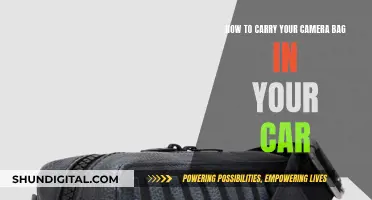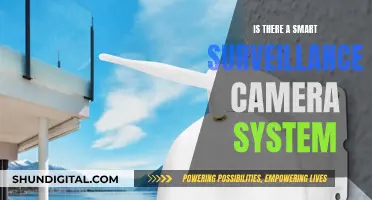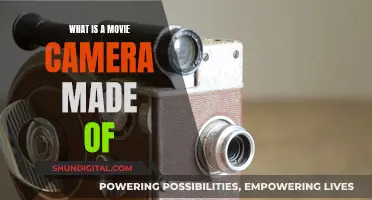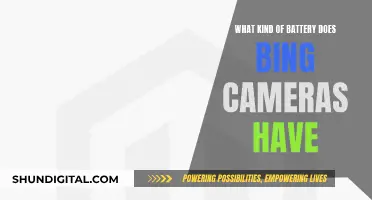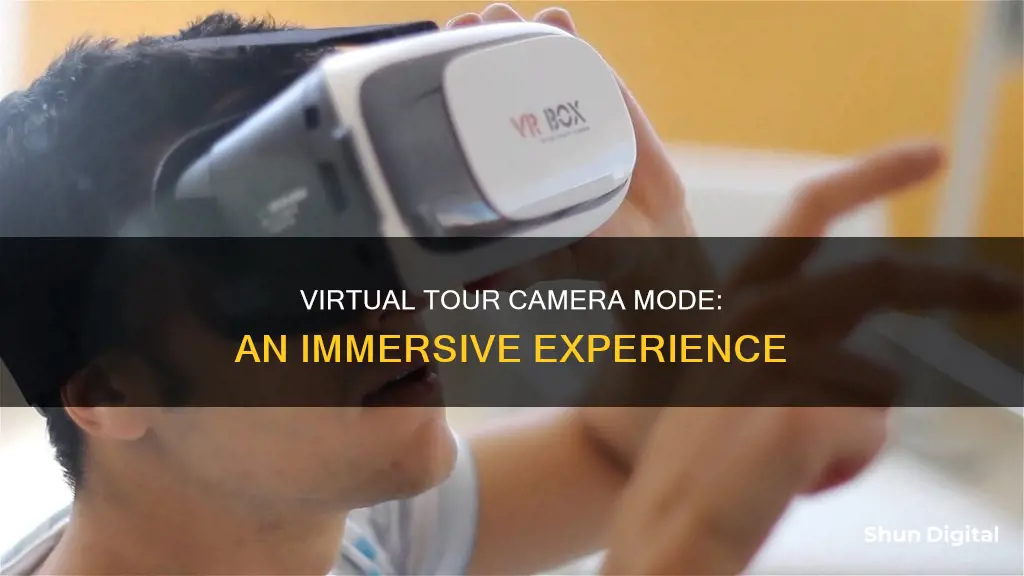
Virtual Tour Camera Mode is a feature that was available on older Samsung Galaxy phones, such as the S5, S6, and S7 Edge. It allowed users to capture 360-degree photos and videos, creating a virtual tour experience. This mode is particularly useful for viewing houses and properties, as it provides a more immersive way to explore spaces remotely. While it seems that Samsung may have removed this feature from newer models, there are other ways to create virtual tours, such as using specialised cameras or third-party apps.
| Characteristics | Values |
|---|---|
| Camera Model | Virtual Tour |
| Camera Type | 360-degree camera |
| Use Case | Shooting virtual tours, suitable for both indoors and outdoors |
| Image Quality | High-resolution images, capable of capturing detailed 360º photos and videos |
| Sensor | Large image sensors, improved low-light performance, dynamic range, and clarity |
| Lens | Fisheye lens, back-to-back placement for capturing hemispherical images |
| Editing | Software for editing and stitching images, creating virtual tours, and adding effects |
| Compatibility | Compatible with mobile apps and editing software for PC and Mac |
| Brands | Ricoh, Insta360, GoPro, Kandao, Nikon, Pentax, Sony, Canon |
What You'll Learn

Virtual tour camera mode was a feature on Samsung Galaxy S5, S6 and S7 Edge phones
Virtual Tour was a camera mode introduced by Samsung on the Galaxy S5. This feature allowed users to create mini tours of places by stitching together multiple pictures taken while moving around a subject or location. The images were then joined with a transitional effect.
The Virtual Tour mode was also available on the Galaxy S6 and S7 Edge. However, Samsung eventually decided to discontinue this feature, replacing it with the Virtual Shot mode on the Galaxy S7. Virtual Shot differs from its predecessor in that it requires the user to walk a full 360 degrees around the subject, capturing multiple photos from all angles. These images are then pasted together, allowing the viewer to tilt the phone or swipe the screen to move around the object.
While the Virtual Tour mode had its limitations, such as requiring the subject to remain still, it offered a unique way to capture and explore images. It provided a more dynamic and immersive experience compared to traditional photography, enhancing the visual storytelling capabilities of Samsung Galaxy users.
Although Samsung chose to replace Virtual Tour with Virtual Shot, likely due to improvements in technology and user experience, the former remains a memorable and innovative feature that added value to the Galaxy S5, S6, and S7 Edge devices.
Charging Mini DV Cameras: A Quick Guide
You may want to see also

It is useful for looking at houses
Virtual Tour Camera Mode is a feature that was available on Samsung Galaxy S5, S6, and S7 Edge phones. It allows users to capture 360-degree panoramic images and create virtual tours. This mode is especially useful for looking at houses, as it enables buyers to take a virtual tour of a property before visiting it in person.
With the advancement of technology, there are now dedicated 360-degree cameras and virtual tour kits available in the market that can be used to create high-quality virtual tours of houses. These kits typically include a tripod, a digital camera rotator, and a fisheye camera lens that can be attached to a smartphone. Some kits also come with phone cases that help align the camera with the fisheye lens for better results.
Creating a virtual tour using these kits is a straightforward process. The camera is mounted on a tripod and connected to a mobile app via Bluetooth. The ultra-wide fisheye lens captures high-resolution 360-degree panoramic images of each room, which are then stitched together to create a seamless virtual tour. Some apps offer additional features such as 3D dollhouse views, image touch-up, 2D floor plans, HDR photo compatibility, and teaser videos.
The benefits of using virtual tours in the real estate industry are significant. Listings with 3D tours generate more interest and sell properties faster. They also help win more listings and referrals, as clients recognize the value of offering virtual tours to potential buyers. Furthermore, virtual tours save time and money by reducing the number of "tire kickers," or casual visitors, as people can get a good sense of the property virtually before deciding to visit in person.
Minolta X-700: What Battery Powers This Classic Camera?
You may want to see also

Ricoh Theta SC and Insta360 One X are not ideal for virtual tours
Virtual Tour Camera Mode is a camera setting that allows users to capture and create immersive 360° photos and videos. While the Ricoh Theta SC and Insta360 One X are both capable cameras, they may not be the ideal choice for those specifically looking to create virtual tours.
The Ricoh Theta SC offers a slim, lightweight, and compact design, making it a portable and easy-to-use 360° camera. It captures high-resolution, fully spherical images with an approximately 14-megapixel output, and features a bright F2.0 lens for exceptional low-light performance. However, one of its limitations is the built-in memory, which can only store up to 8GB. For virtual tours that require a large number of high-resolution images or videos, this storage capacity may not be sufficient.
The Insta360 One X, on the other hand, offers impressive specifications, including 5.7K video resolution and 18MP photo resolution. It also features FlowState stabilisation for smooth footage and an invisible selfie stick function. However, one potential drawback for virtual tour creators is the stitching process. While the camera's ultra-thin design keeps the dual lenses close together for an immaculate stitch, some users have reported issues with the stitching quality, particularly when using the Matterport app.
Additionally, both the Ricoh Theta SC and Insta360 One X have shorter recording times compared to other cameras in their class. For virtual tours that require longer, uninterrupted footage, cameras with extended recording capabilities may be more suitable.
It's worth noting that camera preferences can vary depending on individual needs and shooting styles. While the Ricoh Theta SC and Insta360 One X may not be the top choice for virtual tours, they can still deliver impressive 360° content and are worth considering for other applications.
Polaroid Snap Camera: What Battery Type?
You may want to see also

A camera with 20 megapixels is recommended for virtual tours
Virtual tours are becoming increasingly popular in the real estate industry, with professional agents using 360° virtual tours to sell their listings faster. To create high-quality 360° virtual tours, investing in a good camera is essential.
When choosing a camera for virtual tours, there are several factors to consider. Firstly, the image resolution plays a crucial role in the overall quality of the virtual tour. A higher resolution results in better image quality and a more immersive experience for viewers. It is recommended to opt for a camera with at least 20 megapixels, as this will allow for a quality virtual tour with the ability to zoom in for a more detailed view.
Additionally, the dynamic range of the camera's sensor is important. A camera with a higher dynamic range will be able to capture scenes with strong contrasts and lighting differences, such as indoor environments with spots of direct sunlight, without the need for HDR techniques that require taking multiple photos with different exposures. Cameras with higher dynamic range sensors will also produce better results when stitching multiple photos together to create a seamless 360° panorama.
The Ricoh Theta X, for example, offers 60.5MP still images and impressive low-light performance, making it a great choice for virtual tours. The Insta360 X3 and X4 are also excellent options, offering high-resolution images and user-friendly software.
For those on a budget, the Kandao QooCam 3 offers great value with its 64MP stills and 5.7K video resolution. Another affordable option is the Trisio Lite2, which is designed specifically for shooting detailed 360° photos for virtual tours, although it does not support video capture.
In conclusion, when creating virtual tours, it is recommended to use a camera with at least 20 megapixels to ensure a quality experience for viewers. Other important considerations include the dynamic range of the sensor and the ease of use of the camera and its associated software. By choosing a camera with these specifications, you can create high-quality, immersive virtual tours that showcase properties in the best possible light.
Newmowa Camera Battery Chargers: Compact, Efficient Power Solutions
You may want to see also

Ricoh Theta X is a good choice for shooting virtual tours
Virtual tour camera mode is a setting that allows you to capture and create immersive, interactive 360-degree tours of spaces, often used in real estate to showcase properties. The Ricoh Theta X is an excellent choice for shooting virtual tours, and here are several reasons why:
Firstly, the Ricoh Theta X is a dedicated 360-degree camera with impressive specifications, including a 1/2-inch sensor and 60.5MP still image resolution. This high resolution allows for incredibly detailed and crisp virtual tours that can showcase properties in the best possible light. The camera also offers 5.7K 360-degree video capabilities, providing a high level of flexibility for creating immersive content.
Another standout feature of the Ricoh Theta X is its auto HDR (High Dynamic Range) mode, which is essential for shooting virtual tours. This mode ensures that the camera captures images with a balanced exposure, accurately representing the lighting and details of a room. This is particularly useful when showcasing properties, as it allows potential buyers to get a clear and accurate understanding of the space.
The Ricoh Theta X also offers excellent low-light performance, which is crucial when shooting indoors or in dimly lit areas. Its large sensor and HDR capabilities work together to produce bright and clear images, even in low-light conditions. This feature ensures that virtual tours are well-lit and visually appealing, making it easier for viewers to explore and visualize the spaces.
Additionally, the Ricoh Theta X provides seamless smartphone connectivity, making it easy to transfer and share your virtual tour content. This connectivity simplifies the process of uploading tours to social media, real estate platforms, or other online spaces, enhancing your ability to reach a wider audience.
The Ricoh Theta X is also quite affordable, often priced about $300 less than its predecessor, the Theta Z1. This makes it an excellent option for those new to virtual tour photography or those looking for a cost-effective yet high-quality solution.
In conclusion, the Ricoh Theta X is an exceptional choice for shooting virtual tours. Its high-resolution image and video capabilities, auto HDR mode, impressive low-light performance, and seamless smartphone connectivity make it a powerful tool for creating immersive and engaging virtual tours, particularly in the realm of real estate.
Updating Adobe Camera Raw CS6: A Step-by-Step Guide
You may want to see also
Frequently asked questions
Virtual Tour is a camera mode available on some Samsung Galaxy phones. It allows users to capture a complete sphere in one shot, creating a 360-degree view of the scene.
The Virtual Tour mode uses a fisheye lens to capture a 180-degree view with each shot, which are then stitched together to create a full 360-degree panorama.
The Virtual Tour mode is particularly useful for viewing properties, capturing events, or showcasing products from multiple angles. It provides an immersive experience for viewers, who can explore the scene using their mouse, touchpad, touchscreen, or VR headset.
While the Virtual Tour mode is a convenient feature for Samsung Galaxy users, there are other ways to create virtual tours. You can use a 360-degree camera, such as the RICOH THETA camera, which specializes in capturing high-quality 360-degree images and videos. There are also smartphone apps, like the RICOH360 Tours app, that guide you through capturing and stitching images together to create virtual tours.
To access the Virtual Tour mode, go to your camera settings and enable it under the "manage modes" option.


